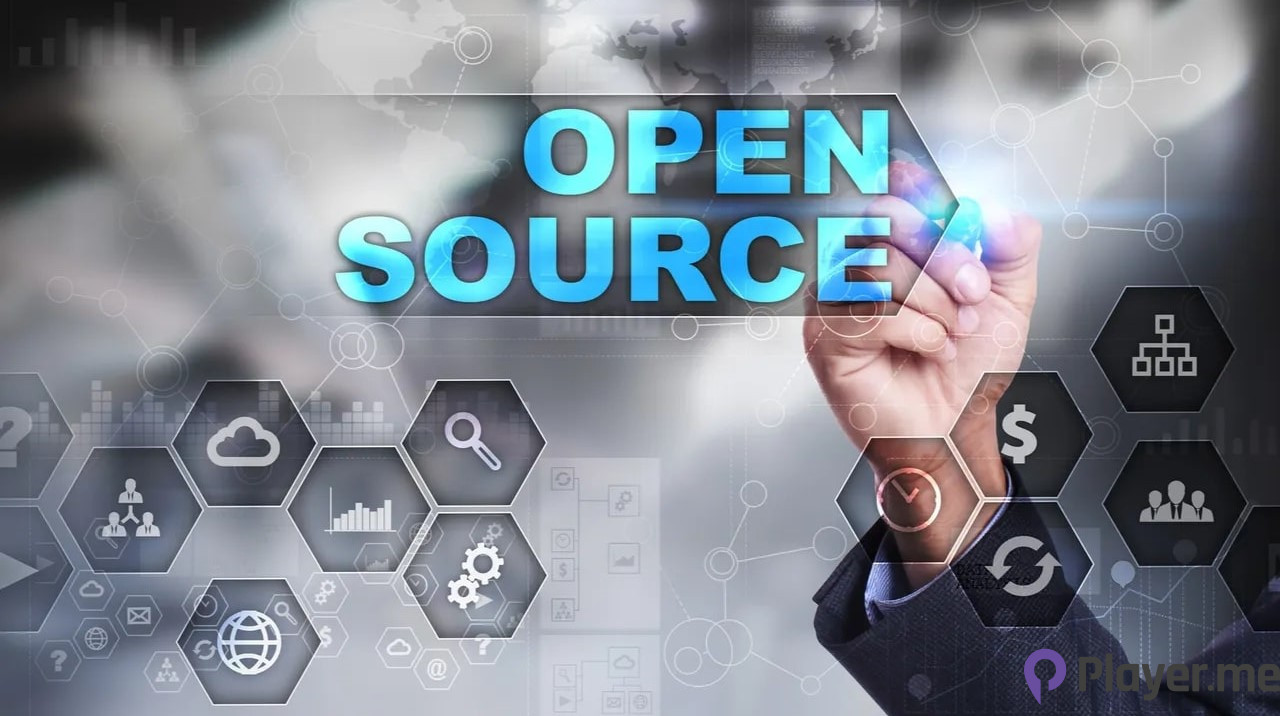Artificial Intelligence (AI) represents the pinnacle of scientific and technological achievement. Humans have empowered machines to emulate human intelligence across various tasks — from linguistic comprehension to image recognition and strategic gameplay. The exponential growth of AI owes much to the confluence of abundant data, formidable computing power, and groundbreaking algorithms.
Yet, not all AI systems are alike. Two methodologies govern the development and deployment of AI: open source and closed source. Open source AI prioritises transparency and collaboration by making models and software accessible to all for modification, enhancement, and redistribution. Closed-source AI favours exclusivity and is accessible only to select developers or entities.
The difference between open source AI and closed-source AI has sparked debates among regulators, startups, and tech giants alike, as different priorities of safety and profit vie for supremacy.
Also Read: The 5 Biggest Challenges of AI in 2024
Delving Into Open Source AI Advocacy

The Open Source Initiative (OSI) is the custodian of open source technology’s defining principles. It asserts that Open source AI involves more than access to source code — it requires compliance with ten criteria. Some of these criteria include transparent access to source code at minimal or no cost, non-discriminatory practices, and licences that do not impede other software.
However, full adherence to OSI standards is rare. Take, for instance, Mistral, the French AI frontrunner. While it unveils the numerical parameters that shape AI performance, it retains secrecy over the data and training processes.
Advocates of open source AI argue that open source fosters accessibility and democratises the tech economy. Alex Combessie, CEO and Co-founder of the French open source AI company Giskard, stresses the democratising potential of open source initiatives in an interview with Euronews Next.
Also Read: Alibaba Introduces Open-Source AI Model to Compete with Meta’s Llama 2
The Economic Promise of OSS LLMs
Open Source Software (OSS) Large Language Models (LLMs) present a compelling economic proposition. These models, exemplified by Falcon, Llama2, Mistral 7B, and SDXL, promise cost savings through optimised hardware infrastructure and enhanced operational efficiency. As OSS model proliferation continues, hardware optimisation progresses, manifesting in reduced latency and minimised cold starts — critical for real-time applications.
The open source AI paradigm facilitates extensive validation and exploration. Unlike limited API access, open source autonomy empowers developers to diagnose issues, implement checks, validations, and tweaks, and ensure model effectiveness and adaptability across diverse contexts. Moreover, the cost-effectiveness of OSS models goes beyond deployment. These models also facilitate ongoing modifications and improvements without licencing fees or proprietary constraints.
Fine-tuning OSS models is more economical and flexible for solving domain-specific problems, offering a competitive edge over closed-loop APIs. The affordability and flexibility of controlling the entire model instantiation stack enhance accessibility. This accessibility benefits startups and smaller organisations constrained by closed source solutions’ capital demands.
Exploring Closed Source Models: Streamlined Integration and Ongoing Support
In contrast to open source AI, closed-loop models emerge from proprietary environments. These models require minimal configuration and plug-and-play functionalities that significantly lower the technical barriers to adoption. This simplicity proves especially beneficial for non-technical users and businesses seeking to harness AI capabilities without extensive developmental resources.
Closed source models come bundled with dedicated support and continuous updates from their parent companies. This ensures the reliability and currency of the models, keeping them aligned with the latest advancements in AI. Such ongoing refinement and stability might pose challenges within open source AI projects, where development relies on community contributions and lacks centralised oversight in closed source environments.
Also Read: The 8 Most In-Demand AI Skills Beyond 2024
The Power of Open Source AI Communities: Driving Innovation and Versatility
Open source AI models thrive within vibrant developers, researchers, and enthusiast communities. These communities serve as hotbeds of collaboration that refine and train models while expanding their applicability. In the open source paradigm, ideas flow freely to foster rapid iteration and experimentation. The result? Models that are not only more versatile but also adept at addressing a diverse array of challenges.
This collaborativeness instils a sense of ownership and investment among contributors and creates room for more innovation. With each member bringing their unique perspective and expertise, open source AI models evolve unexpectedly. This organic growth is not typical in closed source models’ more controlled development environments. While centralised organisations may struggle to cater to diverse user needs, the collective intelligence of open source communities ensures that models remain adaptable and practical across a broad spectrum of applications.
Exploring Structured Development
Closed source models present a structured approach to AI development. They are meticulously curated for product validation and market readiness. Backed by corporate entities, these models boast access to extensive resources, technical prowess, and a captive market. The corporate support translates into comprehensive documentation, training, and support to enhance accessibility for businesses with limited AI expertise.
This structured methodology facilitates expedited deployment and seamless integration into existing business frameworks. Despite the formidable size of open source AI communities, the disciplined culture of closed source development often surmounts challenges open source solutions encounter. The superiority between the two models is the subject of heated debate over considerations of efficacy and applicability.
The Democratic Essence of OSS Models
Open Source Software (OSS) models operate on the premise of collective contribution and oversight. This empowers users with unparalleled control over the model’s evolution and utilisation, thereby encouraging transparency and adaptability. However, the openness that endows users with autonomy renders open source AI models vulnerable to exploitation. This vulnerability is reason for concern in an era witnessing the exponential empowerment of AI technologies and cyber threats.
On the other hand, closed source LLMs afford a more controlled environment better suited to mitigate data corruption risks or model misuse. This control, however, requires a trade-off: diminished transparency and user autonomy in the model’s decision-making processes.
Our Final Say
The pressing importance of data security stresses the role of responsible AI development. In an era plagued by threats of exploitation and data breaches, the sanctity of user data is a paramount concern. The proposition of builders wielding complete control over user data instead of relinquishing oversight to closed-loop models is necessary to safeguard against potential vulnerabilities.

These discussions show a small part of the bigger argument about Open source AI and closed source AI models. It’s not just a simple choice between the two; there are many different factors to consider. Figuring out which is best involves a lot of research and testing. As stakeholders grapple with complex considerations, the quest for discerning the optimal path forward remains an ongoing endeavour, shaped by the imperatives of efficacy, ethics, and societal impact.
You Might Also Like: A Comparative Analysis: Quantum AI vs. Classical AI
Author Profile
Latest entries
 GAMING2024.06.12Top 4 Female Tekken 8 Fighters to Obliterate Your Opponents in Style!
GAMING2024.06.12Top 4 Female Tekken 8 Fighters to Obliterate Your Opponents in Style! NEWS2024.03.18Elon Musk’s SpaceX Ventures into National Security to Empower Spy Satellite Network for U.S.
NEWS2024.03.18Elon Musk’s SpaceX Ventures into National Security to Empower Spy Satellite Network for U.S. GAMING2024.03.17PS Plus: 7 New Games for March and Beyond
GAMING2024.03.17PS Plus: 7 New Games for March and Beyond GAMING2024.03.17Last Epoch Necromancer Builds: All You Need To Know About It
GAMING2024.03.17Last Epoch Necromancer Builds: All You Need To Know About It





